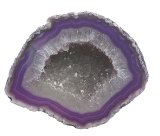
Worksheets and No Prep Teaching Resources
Reading Comprehension Worksheets
Earth Science

Earth Science
 Worksheets and No Prep Teaching Resources Reading Comprehension Worksheets Earth Science |
 Earth Science |
| edHelper's suggested reading level: | grades 9 to 10 | |
| Flesch-Kincaid grade level: | 9.61 |
| Print Not Your Average Rock (font options, pick words for additional puzzles, and more) |
| Quickly print reading comprehension |
| Print a proofreading activity |
|
Not Your Average Rock
By Trista L. Pollard |

|
 1 Imagine it is a beautiful summer day. You have been lying around observing the clouds as they sail effortlessly float along. You decide to get up and explore your backyard for hidden treasure. As you are wandering through the freshly cut lawn, you notice a beautiful rock. While examining your rock, you vaguely remember a conversation your science teacher had about rocks and minerals. Could this be a mineral? Have you found the precious gem that will finance your college years and beyond? Well, before you get too excited, let's explore the characteristics of minerals.
1 Imagine it is a beautiful summer day. You have been lying around observing the clouds as they sail effortlessly float along. You decide to get up and explore your backyard for hidden treasure. As you are wandering through the freshly cut lawn, you notice a beautiful rock. While examining your rock, you vaguely remember a conversation your science teacher had about rocks and minerals. Could this be a mineral? Have you found the precious gem that will finance your college years and beyond? Well, before you get too excited, let's explore the characteristics of minerals. |
Create Weekly Reading Books
Prepare for an entire week at once! |
| Leave your feedback on Not Your Average Rock (use this link if you found an error in the story) |
 |
Earth Science
|
 |
High School Reading Comprehensions and High School Reading Lessons
|